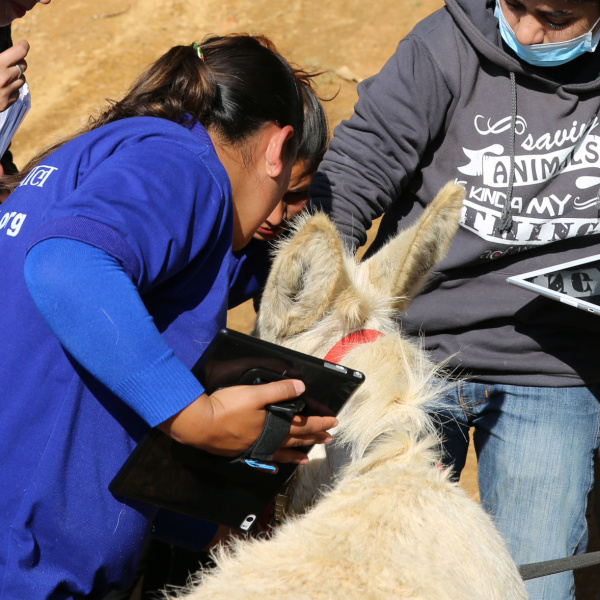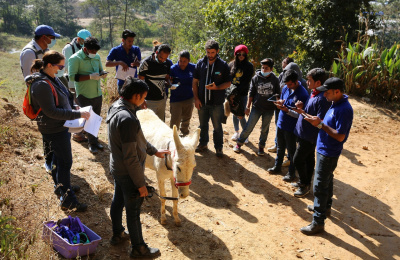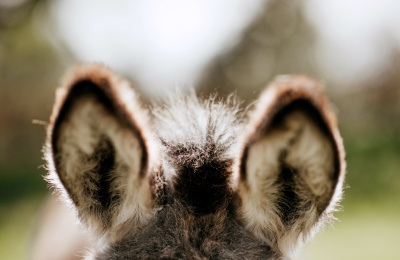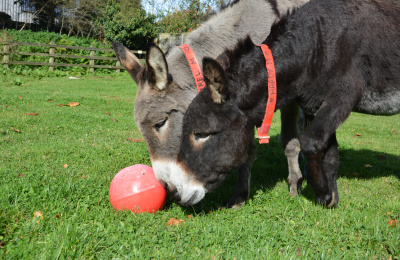We're always looking at new ways to help improve the welfare of the donkeys in our care and the millions more located across the globe.
Donkeys and humans have been interacting with each other for a very long time now. In years gone by, they were the cutting edge of technology themselves, helping move goods across the globe and driving agricultural innovation.
As time has progressed, donkeys no longer find themselves at the forefront of technological revolution. They do, however, continue to benefit from the latest scientific developments.
Here are four of the pioneering tools we have developed and are currently working on, ranging from the relatively simple to the extremely complex.
Equid Assessment Research and Scoping Tool (EARS)
The EARS system is reasonably straightforward, but has proved to be highly effective. Used by our teams on the ground to gather routine welfare data, such as details of an animal's health, environment, nutrition and behaviour, EARS is built around a sophisticated and versatile questionnaire using the latest in smartphone technology.
Developed alongside fellow equine charity, World Horse Welfare, the EARS system has helped collect more than 2,500 animal welfare assessments in the brick kilns of Nepal. The beauty of EARS lies in its potential to help get data into the hands of everyone working hard to improve the welfare of donkeys across the globe.
Welfare Aggregation and Guidance (WAG)
Serving as a follow up tool for EARS, WAG helps provide our staff and partners with an overview of animal welfare, enabling them to quickly identify the animals in most need and ensure they are not being neglected.
We have been able to use the EARS and WAG tool in our own herds and have also been able to utilise them abroad, helping improve the health and welfare of donkeys across the globe - from India, Nepal and Pakistan to Portugal, Italy and Spain.
Imaging technology and artificial intelligence
On the more complex side of pioneering technologies, we have been harnessing the use of global imaging and artificial intelligence to automatically detect new brick kilns in Nepal and track the criminal trafficking of donkeys for the skin trade. The possibilities of this technology are increasingly exponential and we are investigating its use to help gather photographic evidence of abattoirs operating outside the law which can then be used to support legal action through court systems.
The use of space based technology is prevalent across many industries and if you have ever used Google Maps to plot a route then you have already interacted with the technology. It is our hope to continue using these powerful tools to continue to drive improvements to welfare of donkeys across the globe.
Habitat mapping
One of the fundamental areas for maintaining the welfare of donkeys is through effective habitat management, helping keep donkeys physically healthy and enjoying the benefits of an enriched environment. Our Conservation Team is now utilising habitat mapping at our UK sites to help monitor different types of vegetation and see how it changes according to use.
Harnessing sophisticated optical and infra-red imaging techniques, we are able to precisely monitor trees and levels of moisture and erosion in soil.
Do you want to help us develop new technologies?
Your support can help us continue to drive animal welfare innovation



